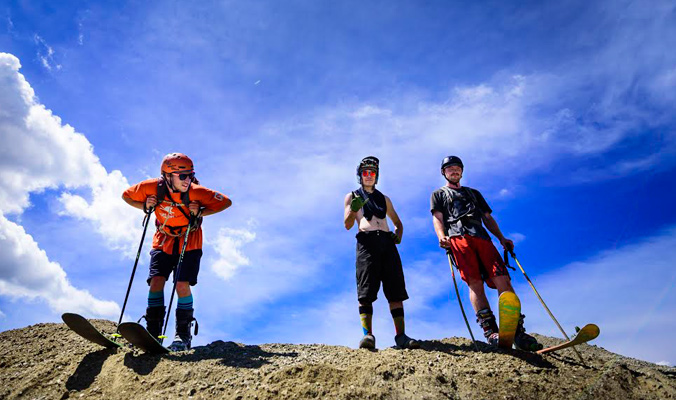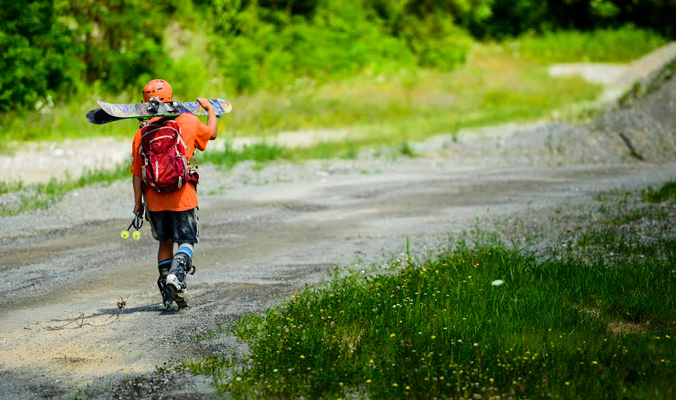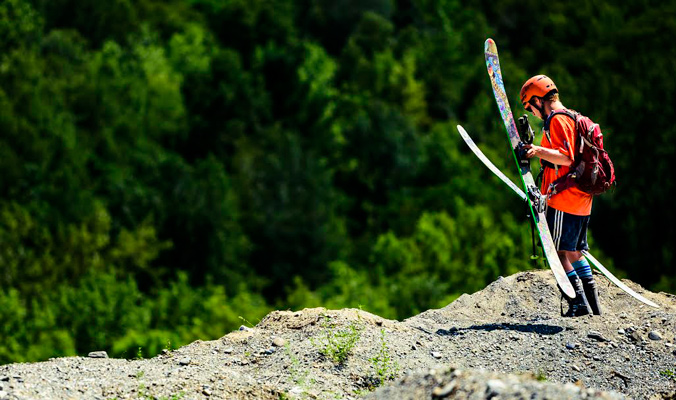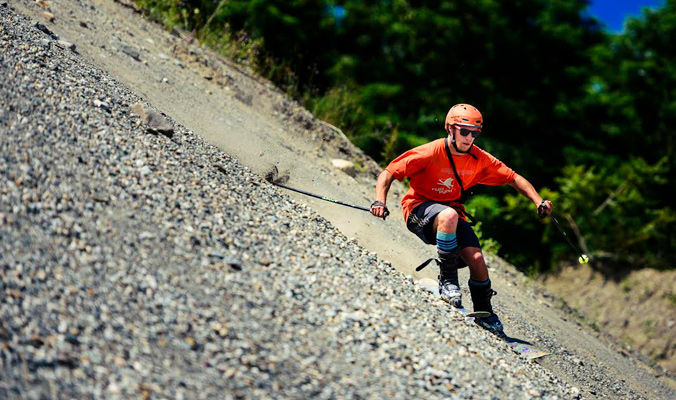By this point in the summer, photographs of steep South American couloirs and idyllic New Zealand peaks are probably filtering through your Instagram feed. With sweltering summer heat, you’ve probably admitted defeat, tossed your skis into the closet and traded them in for your mountain bike. But rest assured—there’s still plenty of summer skiing to be had without spending your life savings on a plane ticket to the southern hemisphere—you just have to be willing to work for it. Or willing to get your bases a little scuffed.
Here’s the latest installment in A Skier’s Guide to Summertime Stoke. All summer long we’ll be sharing from our list of enough summer “ski” zones to keep you satisfied until there’s more to ski than sand.
THE HINESEBURG SANDPIT, HINESBURG, VERMONT: UVMFST GETS (SAND)PITTED
LOCATION: Mt. Gnar and the Back Bowls, Hinesburg, Vermont
SUMMIT ELEVATION: Really high
ACCESS: Just a stroll past security
On a brilliant summer day, several members of the University of Vermont Freeskiing Team (UVMFST) headed out to the Hineseburg sandpit to improve their farmer’s tans and poach some blower gravel. What ensued can only be classified as a sandstorm of brown-pow and the crew got fully (sand)pitted.
“It doesn’t look like it now, but Hinesburg used to be the site of a large, post-glacial delta,” says earth-science nerd Tim McClellan. “As the Laurentide Ice Sheet retreated north across the Champlain Valley, a meltwater lake formed in its wake. The lake’s shore was about 500 feet higher than the shore of present day Lake Champlain. Eight-thousand years ago, a river carrying high volumes of sand and gravel flowed into the lake just east of VT Rt. 116 in Hinesburg. As the water slowed, the sediment was deposited here. This is why Hinesburg is one of Vermont’s main sources of sand and gravel, and a sanctuary for brown-pow seeking skiers.”
TERRAIN CHOICE: “We scouted several different lines in the three major sand pits along 116,” says McClellan. “Ultimately, we chose to ski the pit owned by the town. The others have beefed up security in recent years to prevent poachers from sniping their fresh lines. We were surprisingly able to just walk in through the front gate. The place was empty, eerily similar to a Sunday morning powder day in Utah.”
AVY DANGER: “It’s difficult to learn a lot about sand stability from digging a pit,” McClellan explains. “The river deposited layers of larger rocks when water was flowing faster—during the summer—and smaller gravel and sand when it was flowing slower—during the winter when less ice was melting. Weak layers form between each.”
“I was scheduled to leave for Argentina at the beginning of August,” McClellan told Backcountry. “After not having skied since the end of May, I thought it might be prudent to get some turns—let’s be honest, straightlines—under my belt before getting back after it in snow.”
If you are a summer skier and have an adventure or destination worth sharing, send your story and photos to intern@backcountrymagazine.com.


















Related posts: